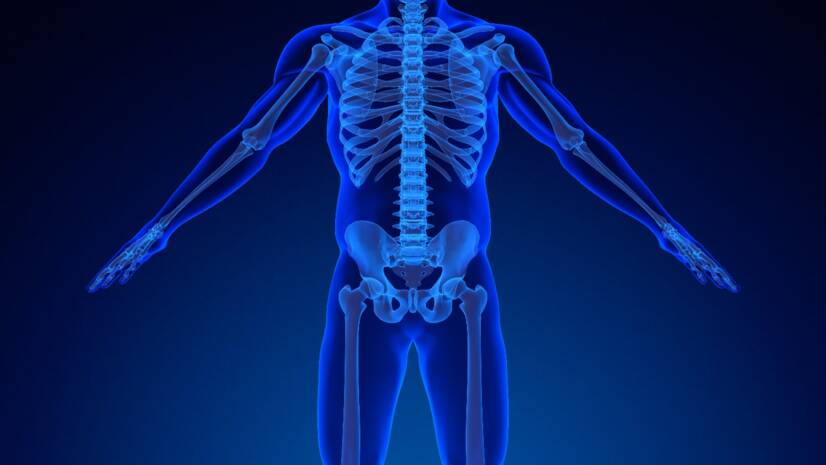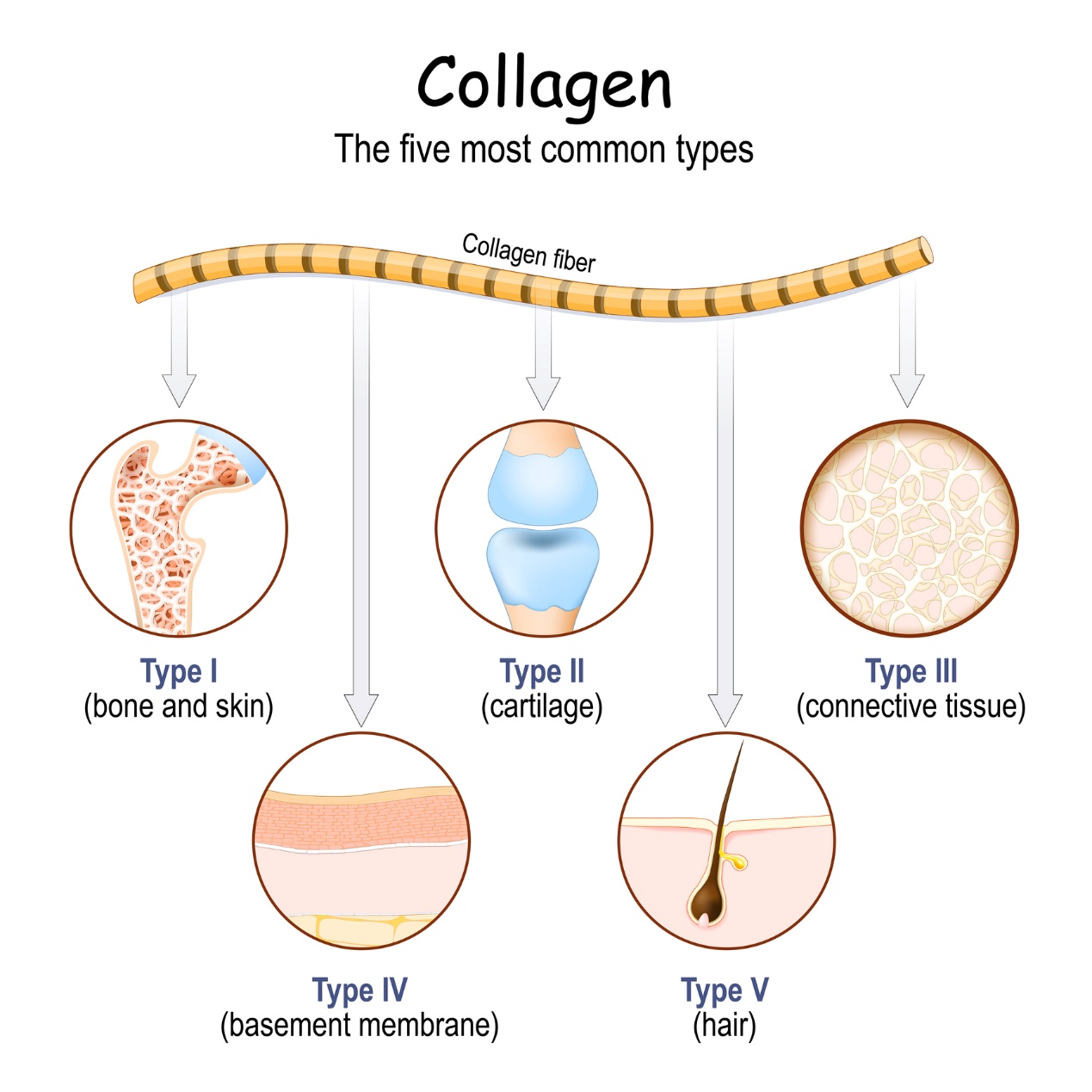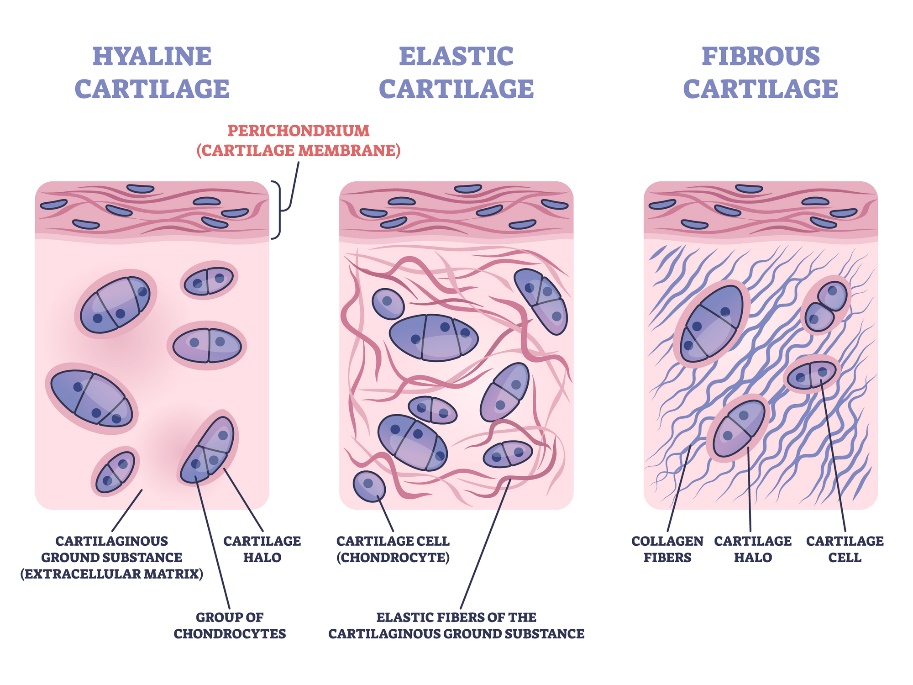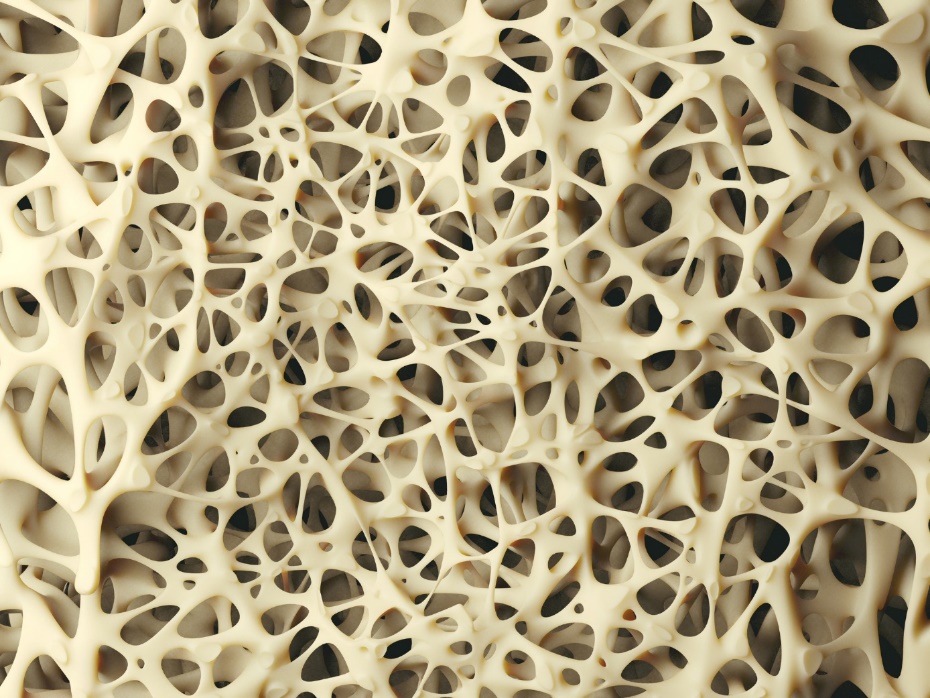- Anatomy - Radomír Čihák
- The Great Medical Dictionary - Martin Vokurka a kolektiv
- Internal Medicine - Pavel Klener
- britannica.com - connective tissue
- ncbi.nlm.nih.gov - Anatomy, Connective Tissue
- physio-pedia.com - Connective Tissue
Connective tissues: what are their functions, tissue types and diseases?

The article describes connective tissues and their functions in the human body, as well as the most common diseases.
Article content
Connective tissue is a tissue composed of cells and intercellular matter. In terms of mechanical function, connective tissues are referred to as connective and supportive tissues.
Connective tissue forms the "skeleton" of many organs.
It is present almost everywhere in the body - it is part of mucous membranes, skin, subcutaneous tissue, separates muscles, forms the skeleton for internal organs.
Embryonic development of connective tissues
Almost all connective tissues are a derivative of the middle germinal sheet (mesoderm). Mesenchyme is a stage of primitive embryonic connective tissue composed of cells without fibers.
Types of connective tissues:
- Connective tissue
- Cartilage
- Bone
- Cementum and dentin (tooth)
Structure and function of connective tissues
Connective tissue is the first to form during embryonic development. It is made up of cells and intercellular material. Connective tissue cells are either fixed or wandering.
Fixed cells include fibrocytes, reticular, pigment and fat cells.
Wandering connective tissue cells include macrophages, mast cells, plasma cells, and some blood cells. The interstitial material is gel-like in consistency. It consists of:
- Basic amorphous mass - a complex of proteins and polysaccharides (a complex of proteins and sugars)
- Fibers of mainly protein nature - collagenous, elastic, reticular
Ligament types:
- Mesenchyme - embryonic tissue
- Rosol - embryonic tissue with cells, collagenous and reticular fibres, occurs in the embryonic period in the umbilical cord
- Sparse and rigid collagen - composed of cells and intercellular material
- represents the basic structure of connective tissue
- it is an intercellular connective tissue - it fills the spaces between other tissues
- the sparse collagenous connective tissue has important functions in the nutrition and metabolism of other tissues
- rigid ligaments are either ordered or disordered and form ligaments, fascia and tendons
- Elastic connective tissue - it is flexible, the fibres in it can stretch, it is in the walls of some large arteries or as part of some ligaments in the spine
- Reticular ligament - is made up of reticular cells and fibres, forms a spatial network
- forms the basic network of lymphatic tissue, bone marrow and spleen
- Adipose connective tissue - divided into white and brown, responsible for the storage and release of fat
- Brown adipose tissue was once known as the hybernation gland - in humans it is found mainly in the deeper parts of the body
- adipose tissue also produces some hormones and growth factors

Ligament function:
The main function of connective tissue in the body is mechanical.
It holds other tissue elements together, forming elastic sheaths, tough and flexible ligaments or elastic linings such as adipose tissue.
It also has functions in the metabolism of substances and in the thermoregulation of the body.
It is present in the transfer of water, substances between the blood and various tissues. It also forms the reservoir of water in the human body.
Adipose tissue is applied as an energy reservoir.
In addition, it is involved in the immune defense system and wound healing.
Cartilage is a tough and rigid connective tissue. It can be cut with a knife, it is not hard. The cells of cartilage are arranged in such a way that there is a sheath around them and a yard around it.
The intercellular mass of cartilage consists of collagen, chondroitin sulfate.
The thin fibres are either collagenous or elastic. They are produced by cartilage cells in the form of precursors.
Types of cartilage:
- cellular cartilage - contains a minimal amount of intercellular material
- hyaline cartilage - glassy (intercellular) material is present in up to 95% of cartilage
- elastic cartilage - contains both elastic and collagen fibres and is very elastic
- connective cartilage - dull, white, very strong

Bone, or osseous tissue, is a white, hard connective tissue. It has primarily a supportive function, but also a protective function. The intercellular material here also contains a mineral component that gives the bone hardness while maintaining some elasticity.
Bone cells are involved in the regulation of calcium in body fluids.
Bone tissue either forms a network or is modified into layers. In this respect, bone is divided into fibrous and layered.
Bone tissue forms the skeleton.

Diseases of the connective system
Diffuse connective tissue diseases are:
Systemic lupus erythematosus
This is an autoimmune disease affecting almost all major organs of the body. It mainly affects the joints, skin, cardiovascular system, kidneys, lungs or central nervous system.
It is not yet known what causes this disease.
The picture is dominated by autoantibodies (antibodies attacking the body's own tissues).
The common denominator of the disease is damage to the blood vessel wall (vasculitis).
The manifestations of the disease are varied: intolerance to sunlight, hair loss, swollen lymph nodes, increased fatigue, joint pain, excessive sweating or muscle pain.
- Skin manifestations: 80% of patients develop butterfly facial redness
- cardiac manifestations: inflammation of the heart muscle and pericardium
- pulmonary manifestations: inflammatory involvement of the pleura, pneumonia
- neurological manifestations: development of organic brain syndrome - diffuse damage - impaired cognitive abilities (learning, memory...), dementia, but also acute strokes, epilepsy
- blood manifestations: anaemia - reduced production of red blood cells
- joint manifestations: joint inflammation, deformities
Diagnosis of the disease is made by echocardiography, magnetic resonance imaging or electroencephalography. Sometimes a biopsy of the affected tissue must also be taken.
Treatment: corticosteroid-based drugs, immunosuppressants (to suppress immunity).
Systemic scleroderma
Is a connective tissue disease affecting the skin and internal organs. It involves sclerotization (hardening) of peripheral and organ blood vessels. The cause of the disease is unknown.
The general symptoms are fatigue, depression and weight loss.
The picture is dominated by vascular abnormalities, which are associated with poor tolerance of the change from heat to cold. Stiffening and thickening of the skin occurs. Itching may occur.
Treatment.
Corticosteroids or immunosuppressants (to suppress immunity) are given.
Sjogren's syndrome
Inflammatory involvement of the exocrine glands (endocrine glands) is at the forefront of the disease. The pancreas, skin, sweat glands, intestinal mucus glands, bronchi or female genital organs may also be affected.
The cause of the disease is unknown.
Manifestations of the disease include:
- Salivary gland involvement - dry mouth, painful swelling of the glands.
- Eye involvement - reduced tear production - burning, foreign body or cutting sensation in the eye, light-headedness
- skin involvement - dry skin with reduced sweat production
- genital involvement - soreness during sexual intercourse
Treatment: moistening the mouth, frequent swallowing, corticosteroids, sometimes other immunosuppressants.
Vasculitis
A disease that is caused by inflammation of blood vessels. It can cause narrowing or closure of the blood vessel.
Causes of the disease:
- cause unknown
- accompanied by other diseases
Manifestations: fever, weight loss, muscle pain, joint pain, fatigue, sometimes seeding on the skin.
Treatment: corticosteroids, sometimes combined immunosuppressive therapy.
Subunits: Wegener's granulomatosis, microscopic polyarteritis, Churg-Strauss syndrome, Henoch-Schönlein purpura, polyarteritis nodosa, Kawasaki disease, Buerger's disease.










